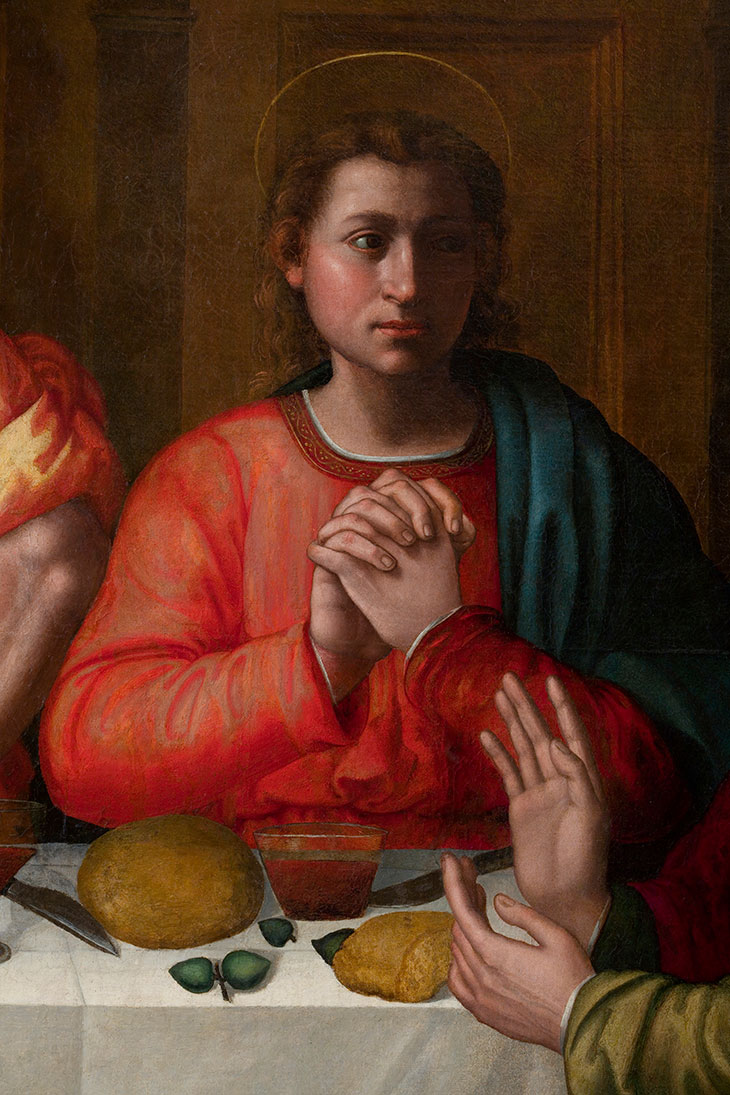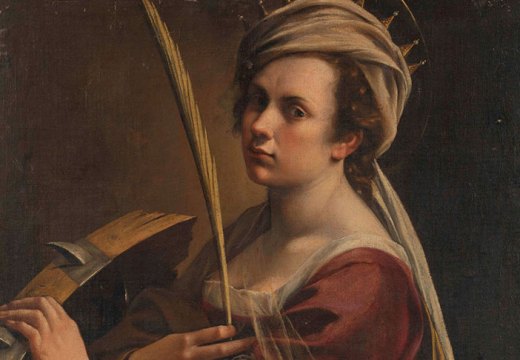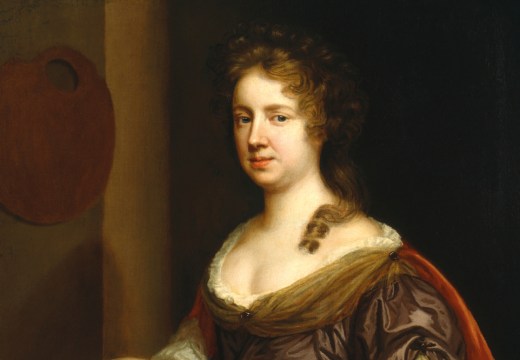The Last Supper, painted by Plautilla Nelli (1523–1588) in Florence, has finally been placed on public view after a long conservation effort (funded by the US-based organisation Advancing Women Artists) that removed grime, varnish and a thick layer of dark overpaint. Last month, when it was installed in the Santa Maria Novella Museum, the assistant mayor of Florence proclaimed that we can finally hear Nelli’s voice. Perhaps we should say that all can now listen to Sister Plautilla and the ‘choir’ of nuns she directed, while painting in the (now destroyed) Dominican convent of Santa Caterina.
The notion of art as the unique expression of an isolated genius may be appropriate for Frida Kahlo, but not Nelli, who stood firmly in the early modern workshop tradition. In part, as art historian Andrea Muzzi explains in an essay in the new publication Visible: Plautilla Nelli and her Last Supper restored, several artists worked on the large canvas (192 x 671cm). This collective approach also reflects life in the convent where the nuns prayed, ate, and worked as one.

Last Supper (c. 1560s), Plautilla Nelli. Museo di Santa Maria Novella, Florence. Museo di Santa Maria Novella, Florence. Photo: Rabatti & Domingie; courtesy Advancing Women Artists
In Renaissance Italy, nearly a third of the known women artists were Dominican nuns. By the late 16th century, the convent of Santa Caterina was known as an art centre in Florence, supplying paintings and polychrome terracotta sculptures for religious institutions as well as secular individuals. The nuns of Santa Caterina who collaborated on the painting would have decided communally to adorn their refectory with the Last Supper, the first known representation of this subject by a woman artist, and observed it at every meal.
Nelli seems to have assumed the role of primary ‘image-maker’ of the Dominicans. This unofficial post had been previously held by Fra Bartolommeo, whose drawings Nelli inherited and adopted for many of her paintings. According to Serafino Razzi, a Dominican friar and brother of one of the nun-artists at Santa Caterina, while Nelli never received formal training in painting, she did teach her art to several nuns.

Last Supper (detail; c. 1560s), Plautilla Nelli. Museo di Santa Maria Novella, Florence. Photo: Rabatti & Domingie; courtesy Advancing Women Artists
The conservator Rossella Lari has shared with me her view, slightly misstated in the otherwise fine English translation in Visible, that Nelli provided the drawings for all the figures in the Last Supper, and probably painted the heads shown in three-quarter view, while the faces in profile were executed by less skilled hands. There is no blending of colours in this work (or in others attributed to Nelli that have been examined by Lari), with the exception of one figure: the finely painted apostle seen in strong chiaroscuro, second from the right. Lari suggests that another artist painted this figure, which served as the prototype for the others.
According to Giorgio Vasari, writing about his colleague in the Lives of the Artists (1568), Nelli made many paintings not only for churches in Tuscany, but also for the homes of the gentlemen of Florence; even the noted writer Annibale Caro, in Rome, owned one work. Vasari observed that Nelli ‘would have done marvellous things if, like men, she had been able to study and to devote herself to drawing and copying living and natural things’. He praised most highly the works she had copied from others, including her Lamentation with Saints for the Santa Caterina chapel (now in the San Marco Museum in Florence). The composition derives from Fra Bartolommeo’s altarpiece of the Lamentation with St Peter and St Paul (at the Galleria Palatina in Florence), and this use of a ‘Dominican’ model allows us to better appreciate Nelli’s own contribution; most importantly, two additional women appear next to Mary. No fewer than five women appear in another work by Nelli, her Pentecost. The altarpiece, praised by Razzi, and still in the church of San Domenico in Perugia, evinces how the artist’s fame extended beyond Tuscany.

Lamentation with Saints (c. 1550), Plautilla Nelli. Museo di San Marco, Florence. Photo: L. Cardini; courtesy Advancing Women Artists
Though nun-artists could not study the male nude, Nelli evidently inherited a wooden mannequin from the workshop of Fra Bartolommeo. This would explain the highly stylised representation of Christ’s body in the Lamentation, and in her St Catherine of Siena (Siena, San Domenico), who weeps as she gazes at a wooden crucifix. This small painting was convincingly attributed to Nelli by Fausta Navarro in the catalogue of the only exhibition dedicated to the artist, held at the Uffizi Gallery in 2017. Technical analyses revealed that the outline of the saint’s profile corresponds precisely to those of the Virgin in the Lamentation altarpieces by both Nelli and Fra Bartolommeo. Evidently, the nun used the friar’s drawing, then other sisters in Nelli’s convent produced the many surviving copies of the St Catherine.
These devotional works, together with two undocumented lunette paintings recently attributed to Nelli, one depicting St Dominic and the other St Catherine (both in the Cenacolo di Andrea del Sarto, Florence), represent more than the artistic vision and accomplishments of one artist. They reveal that Santa Caterina, like so many convents, provided early modern women with an important but often forgotten avenue for artistic expression.
Jonathan K. Nelson (Syracuse University Florence) is currently completing his second book on Filippino Lippi.
Unlimited access from just $16 every 3 months
Subscribe to get unlimited and exclusive access to the top art stories, interviews and exhibition reviews.














![Masterpiece [Re]discovery 2022. Photo: Ben Fisher Photography, courtesy of Masterpiece London](http://www.apollo-magazine.com/wp-content/uploads/2022/07/MPL2022_4263.jpg)
It’s time for the government of London to return to its rightful home